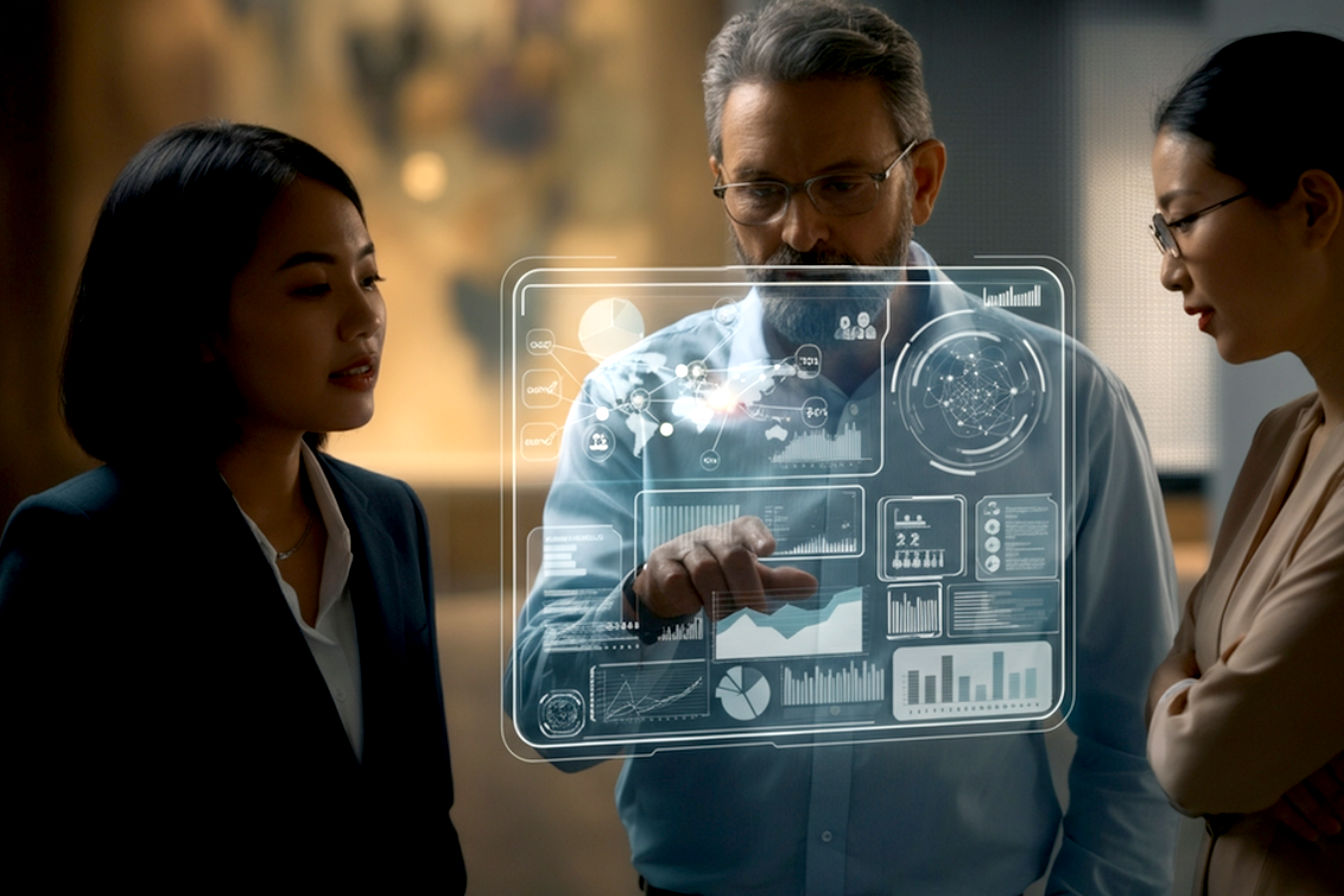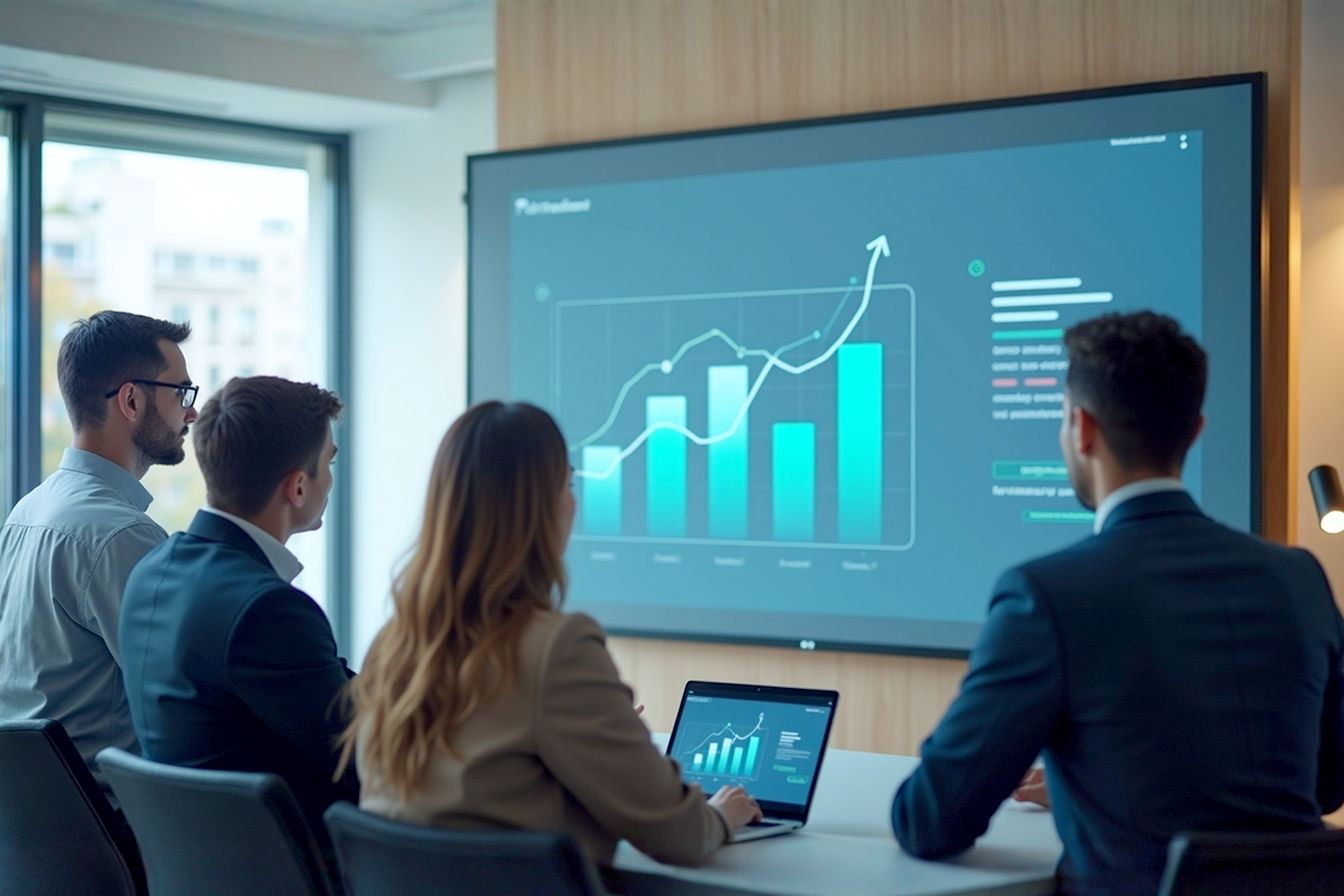This post may contain affiliate links. If you make a purchase through these links, we may earn a commission at no additional cost to you.
Influencer marketing has exploded. We see it everywhere, from Instagram fashion hauls to YouTube tech reviews. For many, this brings to mind business-to-consumer (B2C) campaigns – think celebrities endorsing sneakers or gamers promoting new releases. But what about the business-to-business (B2B) world? Can the power of influence translate when the audience isn’t an individual shopper, but a complex organization with multiple decision-makers? The answer is a resounding yes, but B2B influencer marketing is a different beast entirely.
While the core principle of leveraging trusted voices remains, the strategies, goals, platforms, and even the influencers themselves diverge significantly in the B2B realm. It’s not just about slapping a B2B label on a B2C playbook. Understanding these nuances is crucial for any B2B company looking to harness the authentic power of influencer collaborations. This definitive guide will explore exactly how B2B influencer marketing differs from its B2C counterpart and why a tailored approach is essential for success. We’ll delve into the unique characteristics of B2B audiences, the specific goals B2B influencer campaigns aim to achieve, and the types of influencers who hold sway in professional circles.
Unpacking the Core Differences: B2B vs. B2C Influencer Marketing
At first glance, influencer marketing seems straightforward: find someone with an audience and pay them to talk about your product. However, the context of B2B versus B2C fundamentally changes the game. Let’s break down the key distinctions that set these two approaches apart.
Audience and Decision-Making: Individuals vs. Buying Committees
This is perhaps the most fundamental difference.
- B2C Influencer Marketing Targets Individuals: B2C campaigns speak directly to individual consumers. Their purchase decisions are often driven by personal desire, emotion, trends, or immediate needs. A single person sees an influencer’s post about a new skincare product and can decide to buy it on the spot. The decision-making unit (DMU) is typically one, or at most a small family unit.
- B2B Influencer Marketing Targets Complex Buying Committees: In the B2B world, purchases are rarely impulsive or made by one person. Instead, decisions involve multiple stakeholders across different departments, each with their own priorities and concerns. This group, often called a buying committee or decision-making unit (DMU), might include a department head, a finance manager, IT specialists, and even end-users. A B2B influencer needs to provide content that resonates with these varied roles and addresses their collective need for a solution that offers clear business value, ROI, and integration capabilities. The focus is on logic, efficiency, and long-term benefit rather than fleeting desire.
Think of it this way: A B2C influencer might convince you to buy a $50 pair of headphones. A B2B influencer needs to help convince a committee to invest $500,000 in new enterprise software. The stakes, and therefore the scrutiny, are much higher.
Goals and Objectives: Brand Awareness vs. Lead Generation and Thought Leadership
While both B2B and B2C aim for ultimate business growth, their immediate influencer marketing objectives often differ.
- B2C Often Prioritizes Broad Brand Awareness and Sales: Many B2C influencer campaigns focus on generating widespread brand visibility, creating buzz, and driving direct sales. Success is often measured by reach, engagement (likes, shares, comments), and direct conversions attributed to discount codes or affiliate links. The goal is often high volume and quick turnaround.
- B2B Focuses on Lead Generation, Nurturing, and Establishing Thought Leadership: B2B sales cycles are typically longer and more complex. Therefore, B2B influencer marketing is less about immediate sales and more about:
- Generating qualified leads: Identifying potential business customers who are genuinely interested and fit the ideal customer profile.
- Nurturing prospects: Providing valuable information and building trust over time to guide prospects through the lengthy sales funnel.
- Building credibility and thought leadership: Positioning the brand as an expert and trusted advisor within its industry. Influencers help validate this by associating their own expertise with the brand.
- Driving account-based marketing (ABM) efforts: Using influencers to reach and engage specific high-value target accounts.
For B2B, an influencer collaboration that results in a whitepaper download by a key decision-maker at a target company might be far more valuable than thousands of likes on a social media post.
Influencer Archetypes: Celebrities vs. Credible Experts and Practitioners
The type of person who holds influence also varies dramatically.
- B2C Leverages a Wide Spectrum, Including Celebrities and Mega-Influencers: B2C can effectively use celebrities, lifestyle bloggers, YouTube stars, and Instagram models whose primary currency is often their massive reach and aspirational appeal. While expertise can matter, sheer audience size and relatability often play a bigger role.
- B2B Relies on Niche Experts, Practitioners, and Thought Leaders: In B2B, credibility trumps celebrity. The most effective B2B influencers are often:
- Industry Analysts: Professionals from firms like Gartner or Forrester whose reports and opinions shape industry understanding.
- Subject Matter Experts (SMEs): Individuals with deep, recognized expertise in a specific field (e.g., cybersecurity, AI ethics, supply chain management).
- Practitioners and Peers: Respected professionals who use or have deep experience with the types of solutions being offered. Their testimonials and insights are highly valued.
- Niche Thought Leaders: Authors, speakers, and academics known for their innovative ideas and contributions to a specific business domain.
- Internal Influencers: A company’s own employees, particularly those in leadership or technical roles, who have established credibility.
- Customer Advocates: Satisfied clients who can share authentic success stories.
These individuals may not have millions of followers, but their audience is highly targeted and trusts their professional judgment. A recommendation from a respected industry peer often carries more weight than a flashy endorsement. Authenticity and genuine expertise are paramount in B2B influencer selection.
Content Formats and Platforms: Visual & Ephemeral vs. In-Depth & Evergreen
The nature of the content and where it’s shared also reflects the B2B/B2C divide.
- B2C Thrives on Visual, Engaging, and Often Ephemeral Content: Platforms like Instagram, TikTok, YouTube, and Facebook are B2C staples. Content is often highly visual (photos, short videos, stories), entertaining, and designed for quick consumption. While some B2C content is evergreen, much of it is tied to current trends.
- B2B Favors In-Depth, Value-Driven, and Evergreen Content: B2B audiences seek information that helps them solve complex problems and make informed business decisions. Therefore, effective B2B influencer content often includes:
- Webinars and Online Events: Featuring influencer insights and Q&A sessions.
- Whitepapers and eBooks: Co-authored with influencers, offering deep dives into industry topics.
- Case Studies and Testimonials: Featuring influencers or their clients.
- Podcast Interviews: Allowing for nuanced discussions.
- Blog Posts and Articles: Published on company blogs, industry publications, or LinkedIn.
- Research Reports: Collaborations that lend credibility.
- LinkedIn Content: This platform is king in the B2B space, ideal for sharing professional insights, articles, and engaging in industry discussions. Industry-specific forums and communities also play a role.
B2B content needs to offer substantial value and demonstrate expertise. It’s less about fleeting trends and more about building a library of resources that prospects can turn to over time.
Relationship Dynamics: Transactional vs. Strategic Partnerships
The nature of the brand-influencer relationship often differs in longevity and depth.
- B2C Relationships Can Be More Transactional and Short-Term: While long-term B2C partnerships exist, many campaigns are project-based: an influencer is paid for a set number of posts or a specific campaign duration. The focus can be on immediate campaign deliverables.
- B2B Relationships Aim for Long-Term, Strategic Partnerships: Because trust and credibility are so vital in B2B, and sales cycles are longer, B2B brands often seek to build sustained relationships with influencers. These are less like one-off endorsements and more like strategic alliances. The goal is to cultivate genuine advocates who understand the brand’s values and can speak authentically about its solutions over time. This might involve ongoing content creation, participation in multiple events, or advisory roles. Consistency and sustained presence are key.
Sales Cycle Length and Complexity: Short & Simple vs. Long & Multifaceted
The journey from initial awareness to final purchase is vastly different.
- B2C Sales Cycles are Typically Short and Direct: A consumer sees a product, likes it, and buys it – often within minutes or days. The path to purchase is relatively straightforward.
- B2B Sales Cycles are Long, Complex, and Involve Multiple Touchpoints: As mentioned, B2B purchases involve multiple decision-makers, extensive research, budget approvals, and often integration planning. This process can take months, or even years. Influencer marketing in B2B must align with this longer journey, providing relevant information and reinforcement at various stages of the buyer’s consideration process. An influencer might contribute to initial awareness, help educate during the evaluation phase, and provide validation closer to the decision point.
Metrics and ROI Measurement: Engagement & Sales vs. Lead Quality & Pipeline Influence
How success is measured also reflects the differing goals.
- B2C Often Measures Success with Engagement Rates, Reach, and Direct Sales: Metrics like likes, shares, comments, click-through rates, conversion rates from promo codes, and overall sales lift are common in B2C.
- B2B Measures Success with Lead Quality, Pipeline Influence, and Strategic Impact: While engagement matters, B2B focuses more on:
- Lead Quality: Are the leads generated by influencers relevant and likely to convert?
- Pipeline Velocity: Is influencer content helping to move prospects through the sales funnel faster?
- Account Engagement: For ABM strategies, is the influencer reaching and engaging key individuals at target accounts?
- Share of Voice (SOV): Is the brand being mentioned more frequently in relevant industry conversations?
- Brand Sentiment: How is influencer collaboration impacting perceptions of the brand?
- Website Traffic and Engagement on High-Value Content: Are influencers driving traffic to whitepapers, case studies, or demo request pages?
- Attribution: This is more complex in B2B, often requiring multi-touch attribution models to understand the influencer’s role in a long sales cycle.
It’s not just about how many people saw it, but who saw it and what they did next that truly matters in B2B.
Why B2B Influencer Marketing Demands a Unique Approach
Given these stark differences, it’s clear that simply replicating B2C influencer tactics in a B2B context is a recipe for disappointment. B2B influencer marketing requires a distinct strategy because the audience is motivated by different factors, the decision-making process is more involved, and the definition of success is unique.
- Credibility is Non-Negotiable: B2B buyers are discerning. They are looking for solutions to complex business problems and need to trust the source of information. An influencer without genuine, demonstrable expertise will quickly be dismissed.
- Value Exchange is Paramount: B2B content co-created with influencers must offer tangible value – insights, data, solutions, or new perspectives. Fluff or purely promotional content won’t cut it.
- Long-Term Perspective is Essential: Building trust and influencing complex buying decisions takes time. B2B influencer marketing is a marathon, not a sprint.
- Integration with Overall Marketing Strategy: B2B influencer efforts should be tightly integrated with content marketing, ABM, sales enablement, and other marketing functions. It’s not a siloed activity.
Ignoring these realities means wasted resources and missed opportunities. A thoughtful, B2B-specific approach, on the other hand, can yield significant returns in terms of brand reputation, lead generation, and ultimately, revenue.
Strategies for Effective B2B Influencer Marketing
Now that we’ve established why B2B influencer marketing is different, let’s explore how to do it effectively. Success hinges on a strategic, nuanced approach.
Identifying the Right B2B Influencers: Beyond Follower Counts
Finding the right influencers is arguably the most critical step. In B2B, it’s not about the largest follower count, but the right audience and genuine expertise.
- Define Your Ideal Influencer Profile: Before you start searching, know what you’re looking for. Consider:
- Expertise: Do they have deep knowledge in your industry or a relevant niche?
- Audience: Does their audience align with your target customers (job titles, industries, company size)?
- Resonance: Does their tone and style fit your brand?
- Authenticity: Do they have a genuine voice and credible background?
- Engagement: Do they foster meaningful conversations, not just broadcast?
- Where to Look:
- LinkedIn: The primary hub for B2B professionals. Look for individuals sharing valuable content, engaging in discussions, and holding relevant job titles.
- Industry Publications and Blogs: Who is writing insightful articles and thought leadership pieces?
- Industry Events and Conferences: Who are the respected speakers and panelists?
- Analyst Firms: Identify key analysts covering your sector.
- Your Own Network: Ask your sales team, existing customers, and partners for recommendations.
- Customer Base: Your happiest customers can be powerful advocates.
- Employee Experts: Don’t overlook the expertise within your own organization.
- Influencer Marketing Platforms with B2B Focus: Some platforms are now specializing in B2B influencer discovery (e.g., Onalytica, SparkToro, BuzzSumo for content research).
- Vetting Potential Influencers:
- Content Quality: Analyze their published content. Is it insightful, well-researched, and valuable?
- Audience Engagement: Look beyond likes. Are people asking questions, sharing their perspectives, and genuinely engaging with the influencer’s content?
- Past Collaborations: Have they worked with other brands? How did those partnerships perform? (If discernible).
- Potential Conflicts of Interest: Are they already closely aligned with a direct competitor?
Remember, a micro-influencer with a highly engaged, niche audience of decision-makers can be far more valuable in B2B than a macro-influencer with a broad, less targeted following.
Building Authentic Relationships: From Outreach to Partnership
Once you’ve identified potential influencers, the next step is outreach and relationship building. This requires a personalized and respectful approach.
- Personalized Outreach: Avoid generic, mass emails. Reference their specific work, explain why you believe a collaboration would be mutually beneficial, and be clear about what you’re proposing.
- Offer Value First: Before asking for anything, try to offer value. Share their content, engage with their posts thoughtfully, or offer them an interesting piece of data or an early look at a new product (if appropriate).
- Focus on Mutual Benefit: Frame the collaboration as a partnership. How will it benefit the influencer (e.g., exposure to your audience, access to unique insights, co-creation of high-value content, fair compensation)?
- Start Small and Build: You don’t always need to start with a massive campaign. Consider smaller initial collaborations, like a quote in an article, participation in a webinar, or a joint LinkedIn post, to build rapport and test the waters.
- Nurture Long-Term Connections: The most effective B2B influencer relationships are ongoing. Stay in touch, continue to offer support, and look for new ways to collaborate. Treat influencers like valued partners, not just hired megaphones.
Co-creating Valuable Content: The Cornerstone of B2B Influence
Content is king in B2B, and influencer collaborations should elevate your content strategy. The key is co-creation, not just dictation.
- Align on Content Goals and Themes: Discuss what topics are most relevant to both your audience and the influencer’s audience. What problems can you help solve together?
- Leverage the Influencer’s Expertise: Don’t just give them a script. Allow their unique voice, insights, and expertise to shine through. The content should feel authentic to them.
- Choose Appropriate Formats:
- Webinars: A live discussion or presentation featuring the influencer.
- Podcast Episodes: An interview or co-hosted segment.
- Whitepapers/eBooks: In-depth guides co-authored or featuring contributions.
- Video Interviews/Series: Engaging Q&As or discussions.
- Blog Posts: Guest posts on your blog or theirs, or collaborative articles.
- Case Studies: Featuring an influencer’s experience or their client’s success with your solution.
- Quotes and Soundbites: Incorporating influencer insights into your existing content.
- Joint Research Reports: Collaborating on industry research and analysis.
- Ensure High Quality and Professionalism: B2B content needs to be polished and credible. Invest in good production values for videos, podcasts, and design for written materials.
- Provide Creative Freedom (within guidelines): While you’ll have brand guidelines, allow influencers the flexibility to create content in a way that resonates with their audience. Authenticity is key.
Leveraging the Right Platforms: Where Your B2B Audience Lives
Promoting your co-created content on the right channels is crucial for maximizing its impact.
- LinkedIn is Paramount: This is the undisputed champion for B2B influencer marketing. Encourage influencers to share content natively on LinkedIn, write articles, and participate in relevant groups. Your brand should also actively share and engage with this content.
- Company Blog and Website: Host long-form content like whitepapers, case studies, and webinar recordings on your own properties to capture leads.
- Industry-Specific Forums and Communities: If relevant, influencers can share insights in niche online communities (with respect for community rules).
- Email Marketing: Share influencer content with your subscriber base.
- Twitter (X): Useful for sharing soundbites, links to longer content, and engaging in real-time industry conversations.
- YouTube: For video content like interviews, product demos featuring influencers, or webinar recordings.
- Podcasts: Distribute audio content through major podcast directories.
The key is to be where your target B2B decision-makers are actively seeking information and engaging with peers.
Measuring Success Beyond Vanity Metrics: Focusing on Business Impact
As discussed earlier, B2B influencer ROI isn’t just about likes and shares. You need to track metrics that demonstrate tangible business value.
- Lead Generation:
- Number of leads from influencer-specific landing pages or content (e.g., whitepaper downloads, webinar registrations).
- Quality of leads: Use lead scoring to assess how well these leads fit your ideal customer profile.
- Website Traffic and Engagement:
- Referral traffic from influencer shares.
- Time on page and bounce rate for influencer-related content.
- Conversions on key pages (e.g., demo requests, contact forms).
- Pipeline Influence:
- Track how many leads influenced by influencer content progress through the sales funnel.
- Use CRM integration to tag leads and opportunities touched by influencer campaigns.
- Brand Metrics:
- Share of Voice (SOV) in industry conversations.
- Brand mentions and sentiment analysis.
- Growth in relevant social media followers (especially LinkedIn).
- Audience Growth and Engagement:
- Growth in subscribers to newsletters or communities promoted by influencers.
- Engagement rates on co-created content (comments, meaningful discussions).
- Qualitative Feedback:
- Feedback from the sales team on the quality of leads.
- Anecdotal evidence of influencer impact from customers or prospects.
Utilize UTM parameters, dedicated landing pages, and CRM integrations to track performance accurately. It’s also important to establish baseline metrics before launching a campaign to measure lift effectively.
The Rise of Internal Influencers: Employees and Customers
An often-overlooked but incredibly powerful aspect of B2B influencer marketing is leveraging internal advocates: your own employees and satisfied customers.
Employee Advocacy: Your In-House Experts
Your employees, especially those in technical, leadership, or customer-facing roles, possess deep knowledge and credibility.
- Why Employees Make Great Influencers:
- Authenticity: Their insights are often perceived as more genuine than external marketing messages.
- Expertise: They have firsthand knowledge of your products, services, and industry.
- Trust: People tend to trust employees more than official brand channels. Nielsen reported that 84% of people trust recommendations from people they know.
- How to Foster Employee Advocacy:
- Provide Training and Resources: Educate employees on social media best practices and brand guidelines.
- Make it Easy to Share: Use tools that allow employees to easily find and share approved content.
- Recognize and Reward Participation: Acknowledge and appreciate employees who actively advocate for the brand.
- Encourage Thought Leadership: Support employees in creating their own content (blog posts, LinkedIn articles) related to their expertise.
Customer Advocacy: The Power of Real-World Success
Your happiest customers are your best salespeople. Their authentic stories of success can be incredibly persuasive.
- Why Customer Advocates are Effective:
- Social Proof: They provide tangible evidence that your solution works and delivers value.
- Relatability: Prospects can see themselves in your customers’ challenges and successes.
- Unbiased Perspective: While facilitated by you, their voice is still that of a peer.
- How to Leverage Customer Advocates:
- Case Studies and Testimonials: Formalize their success stories in written or video format.
- Webinars and Events: Invite customers to share their experiences.
- Review Sites: Encourage satisfied customers to leave reviews on platforms like G2, Capterra, or TrustRadius.
- Referral Programs: Incentivize customers to refer new business.
Both employee and customer advocacy programs require nurturing and support, but they can deliver highly credible and cost-effective influence.
Challenges and How to Overcome Them in B2B Influencer Marketing
While powerful, B2B influencer marketing isn’t without its challenges. Awareness and proactive strategies can help mitigate them.
- Challenge: Finding Truly Relevant and Authentic Influencers.
- Solution: Invest time in thorough research and vetting. Look beyond follower counts to assess genuine expertise, audience alignment, and engagement quality. Utilize specialized B2B influencer discovery tools.
- Challenge: Measuring ROI Accurately.
- Solution: Define clear objectives and KPIs upfront. Use UTM tracking, dedicated landing pages, and CRM integration. Focus on metrics that align with B2B goals (lead quality, pipeline influence) rather than just vanity metrics. Understand it’s often about influence, not direct last-click attribution.
- Challenge: Ensuring Content Authenticity and Avoiding Over-Commercialization.
- Solution: Prioritize co-creation and give influencers creative freedom within brand guidelines. Focus on providing value to the audience, not just promoting your product. Long-term partnerships foster more natural advocacy.
- Challenge: The Time and Effort Required to Build Relationships.
- Solution: View influencer marketing as a long-term strategy, not a quick win. Invest in personalized outreach and ongoing relationship management. Start with a manageable number of key influencers.
- Challenge: Budget Constraints.
- Solution: B2B influencer marketing doesn’t always require huge budgets. Micro-influencers, niche experts, and internal advocates can be highly effective and more affordable. Focus on the value exchange, which isn’t always monetary (e.g., access, co-creation opportunities).
- Challenge: Aligning Influencer Content with Complex B2B Messaging.
- Solution: Provide clear briefings and ensure influencers understand your value proposition and target audience. However, avoid overly prescriptive briefs that stifle authenticity. Work collaboratively on messaging.
The Future of Influencer Marketing in the B2B Landscape
B2B influencer marketing is still evolving, but several trends point to its growing importance:
- Increased Sophistication: Brands are moving beyond basic tactics to more integrated and strategic influencer programs.
- Rise of Niche and Micro-Influencers: The value of highly targeted expertise over mass reach will continue to grow.
- Emphasis on Long-Term Partnerships: Brands will increasingly seek sustained relationships with trusted advocates.
- Greater Focus on Employee and Customer Advocacy: Companies will tap more into these internal sources of influence.
- AI and Data-Driven Influencer Identification and Measurement: Technology will play a larger role in finding the right influencers and proving ROI.
- Integration with Account-Based Marketing (ABM): Influencers will be key in reaching and engaging specific target accounts.
- Video and Interactive Content: Formats like live Q&As, webinars, and short-form video will become even more prevalent.
As trust in traditional advertising wanes, the authentic voices of credible experts will become even more critical for B2B brands looking to cut through the noise and connect with their audiences meaningfully.
Conclusion: Embracing the Unique Power of B2B Influence
Influencer marketing is not a one-size-fits-all strategy. For B2B organizations, success lies in recognizing and embracing the distinct characteristics of their audience, goals, and the nature of influence in a professional context. It’s about fostering genuine connections with credible experts who can provide real value to a discerning business audience.
By focusing on authentic relationships, co-creating high-value content, leveraging the right platforms, and measuring success through business-relevant metrics, B2B companies can unlock the immense potential of influencer marketing. It’s a shift from merely broadcasting messages to engaging in meaningful conversations, building trust, and establishing lasting authority in their industry. The B2B influencer landscape is rich with opportunity for those willing to approach it with strategy, authenticity, and a commitment to long-term value.






